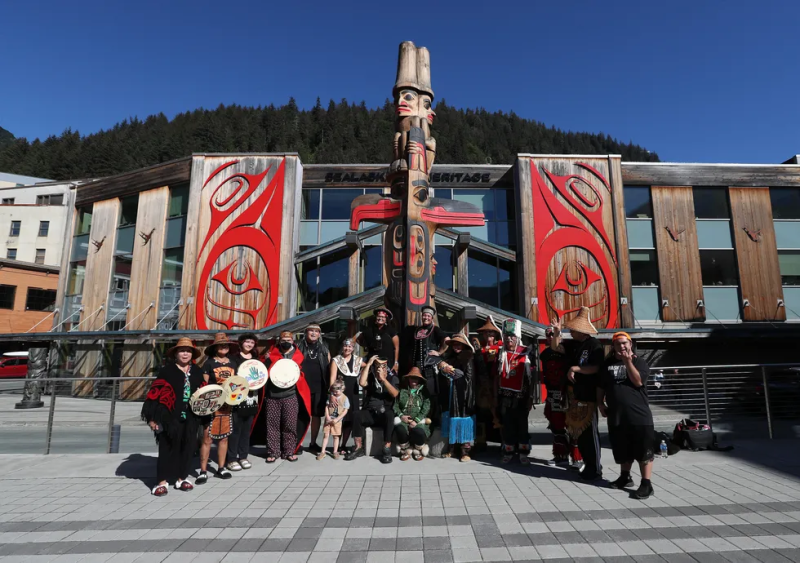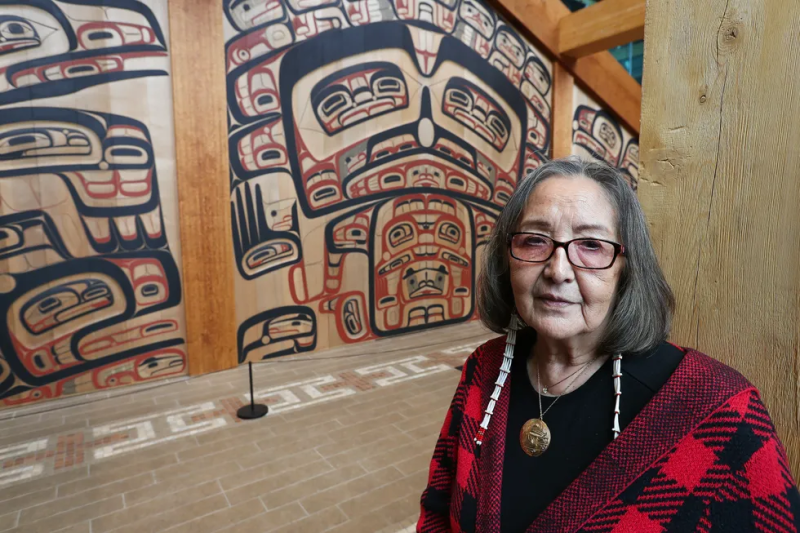A healing culture: Alaska Natives use tradition to battle influx of drugs, addiction
JUNEAU, Alaska — In the sanctity of a tribal sweat lodge, master wood carver Wayne Price felt his creator utter a directive to use his talents to help men and women battle addiction.
"In that sweat lodge, I said: ‘What can I do, I’m just a carver?’ The creator said he wanted me to create a healing dugout (a canoe) and a healing totem," said Price, who uses a small "adze" cutting tool similar to an ax to whittle off wood chips to fashion his renowned art pieces.
Price, a member of the Tlingit tribe — pronounced clink-it — had sculpted many dugouts and totems, but wondered: “How do you make a healing one?”
"The creator told me each chip that comes off that project represents a life we've lost to alcohol or drugs in indigenous country," Price said. "Of all the chips that came off that project, it wouldn't be enough."
More:Targeting 'The Last Frontier': Mexican cartels send drugs into Alaska, upping death toll
With an influx of drugs surging north from Mexico, overdose death rates were the highest in 2019 and 2020 among Alaska Natives and American Indians compared to other racial and ethnic groups, according to the U.S. Centers for Disease Control and Prevention. The CDC report, "Drug Overdose Prevention in Tribal Communities," pointed to health inequities, including limited access to addiction treatment, and stressed how culture can help heal.
Price, raised in the coastal town of Haines, had struggled with alcoholism for years. He said when he listened to his creator and walked out of the sweat lodge about two decades ago, the cravings ceased.
His focus turned to his new commitment to design a healing totem and dugout canoe. The mission would take him years, but he was resolute.
"It was a new idea," Price said. "It wasn't even considered. All the entities that support me now, told me 'no' back then."
Fast forward to today and Price is a Northwest Coast Arts professor at the University of Alaska Southeast's Juneau campus, where he teaches a new generation how to convey their own messages in their work.
Price's art can be seen throughout Southeast Alaska, or Aani, the ancestral home of both the Tlingit and Haida people, according to the Central Council of the Tlingit & Haida Indian Tribes of Alaska. The Central Council, based in Juneau, is a tribal government representing more than 36,000 members worldwide.
Throngs of visitors will soon see Price's latest carving, a tribal clan house post, south of downtown Juneau when they ride the Goldbelt Tram. The near-vertical climb carts passengers above the Gastineau Channel about 1,800 feet — higher than the Eiffel Tower and Empire State Building. Price's 10-foot cedar post, traditionally placed in pairs at the entrance of a tribal clan gathering place, features a Tlingit warrior holding a paddle and standing on Mount Roberts.
Price erected his first healing totem pole in 2006 in Sitka, a popular cruise ship stop on Baronof Island, a five-hour ferry ride southwest of Juneau. The sculpture stands on a lawn in front of the community health services building of Mt. Edgecumbe Medical Center.
During a fall 2006 celebration, about 140 supporters used 4-by-4 boards to haul the 4,000-pound totem from Price's workshop to its resting place, with 400 teaming to hoist the pole using ropes.
Over the years, many men and women have stood at its base and reflected on their own need for recovery, with some later telling Price they were inspired to seek help.
A plaque at the base of the totem offers a guide to understanding the carvings and embarking on self reflection, reading in part: "Mother Earth is at the base to connect us, sustain us and teach us all as we choose the path of healing and the sacred ground of wellness."
A medicine woman kneels barefoot on the earth, holding a cedar basket of medicinal plants. "She is our grandmothers, aunties and mothers who reach out to embrace us with tradition, culture, medicine and love. She is always there to give us strength."

There is a shaman with a wolf spirit helper at his feet to guide the shaman as he enters the darkness and brings people out onto paths of recovery and wellness.
The sculpture is topped with a raven, which holds the moon in his mouth, "drawing our people away from addiction towards the light of recovery."
Rosita Worl, president of Sealaska Heritage Institute in downtown Juneau, has led ongoing efforts to restore Alaska Native culture throughout the schools and community.
Worl, also a Tlingit member, was taken from her family at age 6 and spent three years in a Christian boarding school, where she said they tried to "beat my nativeness out of me," during colonization.
"Not only was our culture suppressed, but now we have this sickness that is destroying people and their lives," she said, referring to addiction.
"Generational trauma has an impact on us," she said. "We definitely know that culture heals."

Incorporating culture in addiction treatment is a national trend across Alaska and the nation.
Alaska is working to revive native culture in other ways, too. Programs are helping youths learn tribal languages as well as connecting to customs, including fishing, hunting, berry picking, dancing and storytelling.
During one project still underway, 10 artists from the Tlingit, Haida and Tsimshian tribes completed totems on display along the Juneau waterfront. Another 20 are planned, including one from Price.
On another mission, Price taught carving to 18 young adults through an alcohol-free and drug-free camp in 2009. The campers were dropped off on Egg Island, surrounded by the Yukon River, a few miles off the shores of Whitehorse, the capital of northwest Canada's Yukon territory.
"The only way off was to carve a 30-foot dugout canoe," Price said.
The youths spent more than two months whittling down a six-and-a-half-ton red cedar log into a 30-foot canoe.
"It's the land of the midnight sun, so chips were flying all the way to midnight, and it was still daylight," Price said.
"I saw how much it changed their lives."
Price completed a healing dugout, an intricate 28-foot red and black canoe, currently on display at the college's Juneau campus, where Price teaches students of all backgrounds.
Kevin Jones, a citizen of the Choctaw Nation of Oklahoma, said he was in a dark place due to addiction when he signed up for Price's art classes six years ago.
Jones, a stained-glass artist and painter, became Price's apprentice, also using art to heal.
"Wayne made it very clear I could use the elements of Northwest Coast design to tell my own story," said Jones, whose paternal great-grandparents were victims of the infamous Trail of Tears. "We were removed from our ancestral lands and a lot of our stories are gone."
Price guided Jones to carve a native paddle and to go on a journey on a dugout that braved ocean waves.
"There was a natural progression of the addiction losing its power," Jones said.
"I realized that just like the art, my life has value."
Disclaimer: The copyright of this article belongs to the original author. Reposting this article is solely for the purpose of information dissemination and does not constitute any investment advice. If there is any infringement, please contact us immediately. We will make corrections or deletions as necessary. Thank you.






